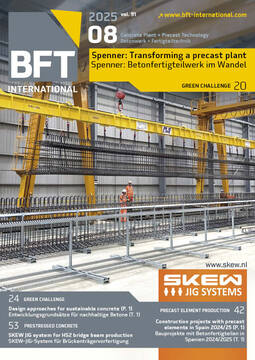Impressive facts and figures
Dear readers, concrete has become by far the most important building material in our contemporary industrial age. Its decisive advantages – its relatively high strength and durability, combined with ready availability and cost-effective production anywhere in the world – are still unmatched by any other building material. Concrete as a building material has made the rapid economic development of industrialized nations over the past 100 years possible and today plays a central role in their economic progress, particularly in developing countries. The annual production volume of concrete is currently an impressive 8 billion m³.
On the other hand, the production of concrete is known to be associated with high levels of CO2 emissions, which result mainly from cement production. This makes cement production one of the most energy- and CO2-intensive industries, surpassed today only by energy generation from burning fossil fuels, transportation and steel production. It is estimated that cement production is currently responsible for around 7 % to 8 % of global anthropogenic CO2 emissions.
I did not make up these facts and figures, but took them from a scientific article by the respected Professors Harald S. Müller and Michael Haist. These authorities wrote the main article “Design approaches for sustainable concrete mixes and structural components” in this issue of BFT (pp. 24 ff., Part 1), where they attempt to provide answers to the above-stated challenges. I can also recommend our concrete plant report by Spenner Syston (pp. 20 ff.) and the project compilation by Alejandro López Vidal, Technical Director of the Spanish Concrete Association ANDECE on pp. 42 ff. I wish you much enjoyment in reading this issue.







